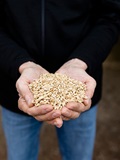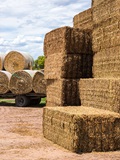Goulburn Murray Valley
20 May 2020
| Date | GV 23 | GV 22 | GV 5YA |
|---|---|---|---|
| 06-Jan-23 | 296 | 190 | 240 |
| 13-Jan-23 | 303 | 190 | 240 |
| 20-Jan-23 | 310 | 190 | 244 |
| 27-Jan-23 | 318 | 190 | 246 |
| 03-Feb-23 | 323 | 190 | 239 |
| 10-Feb-23 | 333 | 185 | 236 |
| 17-Feb-23 | 336 | 185 | 235 |
| 24-Feb-23 | 338 | 185 | 233 |
| 03-Mar-23 | 338 | 185 | 232 |
| 10-Mar-23 | 343 | 185 | 231 |
| 17-Mar-23 | 343 | 185 | 231 |
| 24-Mar-23 | 343 | 185 | 231 |
| 31-Mar-23 | 343 | 185 | 231 |
| 07-Apr-23 | 343 | 185 | 230 |
| 14-Apr-23 | 344 | 186 | 226 |
| 21-Apr-23 | 345 | 188 | 230 |
| 28-Apr-23 | 345 | 188 | 224 |
| 05-May-23 | 345 | 188 | 226 |
| 12-May-23 | 343 | 188 | 228 |
| 19-May-23 | 340 | 188 | 228 |
| 26-May-23 | 343 | 188 | 232 |
| 02-Jun-23 | 343 | 190 | 232 |
| 09-Jun-23 | 343 | 191 | 232 |
| 16-Jun-23 | 342 | 193 | 233 |
| 23-Jun-23 | 340 | 193 | 241 |
| 30-Jun-23 | 335 | 193 | 241 |
| 07-Jul-23 | 330 | 193 | 243 |
| 14-Jul-23 | 330 | 196 | 246 |
| 21-Jul-23 | 330 | 198 | 253 |
| 28-Jul-23 | 320 | 198 | 253 |
| 04-Aug-23 | 320 | 198 | 253 |
| 11-Aug-23 | 315 | 198 | 274 |
| 18-Aug-23 | 313 | 198 | 276 |
| 25-Aug-23 | 310 | 198 | 276 |
| 01-Sep-23 | 310 | 198 | 276 |
| 08-Sep-23 | 198 | 274 | |
| 15-Sep-23 | 195 | 273 | |
| 22-Sep-23 | 195 | 266 | |
| 29-Sep-23 | 195 | 259 | |
| 06-Oct-23 | 195 | 259 | |
| 13-Oct-23 | 195 | 263 | |
| 20-Oct-23 | 195 | 252 | |
| 27-Oct-23 | 195 | 240 | |
| 03-Nov-23 | 195 | 244 | |
| 10-Nov-23 | 195 | 247 | |
| 17-Nov-23 | 208 | 243 | |
| 24-Nov-23 | 245 | 250 | |
| 01-Dec-23 | 252 | 248 | |
| 08-Dec-23 | 258 | 254 | |
| 15-Dec-23 | 268 | 258 | |
| 22-Dec-23 | 278 | 262 | |
| 29-Dec-23 | 290 | 270 |
Notes:
Change in price is the change since the last report. Hay quoted is sourced and delivered locally, GST exclusive unless stated otherwise. It should be noted that local prices quoted may not be the cheapest available, sourcing it from another region may be more affordable, and buyers are encouraged to evaluate all options. Prices are indicative to a mid-range shedded product, and based on the best indication of market value at the time of reporting. It should be noted there is a wide variation in quality of hay, prices for a mid-range product will not reflect the weighted average of trade. Prices will naturally vary based on the product quantity and quality, buyer/seller relationship and the size of the trade.The hay report has been commissioned by Dairy Australia to provide an independent and timely assessment of hay markets in each dairy region. This report is created using data provided by the Australian Fodder Industry Association (AFIA). It should be remembered that actual prices may vary for quality or other reasons. Whilst all reasonable steps have been taken to ensure the accuracy of the information contained in this report, Dairy Australia disclaims all liability to the fullest extent permitted by Australian law for any inadvertent errors and for any losses or damages stemming from reliance upon its content. Dairy Australia recommends all persons seek independent advice and, where appropriate, advice from a qualified advisor before making any decisions about changes to business strategy.
Commentary
- Light to moderate rain across most of the region this week, with 15-25mm of rain for the week, however the temperatures remain low, and mist and fog persist into the mornings.
- The valley is still very green, and growth is good across the region. Fertiliser is also going out on new season pastures.
- Silage is being sporadically cut across the region. The cut silage is coming in very moist. Farmers will be carefully managing the high moisture levels to maintain quality and reduce risks of bacteria or acid build-up.
- There are plenty of unharvested lucerne paddocks which, given the ongoing wet and cold weather and the lateness of the season will more than likely just be topped.
- Mice have been reported in paddocks and sheds, and whilst not in large numbers there has been damage to recently sown crops. Monitoring is recommended and information about management is available: https://grdc.com.au/resources-and-publications/resources/mouse-management.
- Field peas are being sown into stubble fields around Rochester. Mid-winter wheat varieties such as Cesario are coming along well around Katandra with urea being spread this week.
- Barley being sown into some of the drier paddocks in the Shepparton region, with growers looking for more follow-up rain.
- There have been more discussions about the possibility of FMD reaching Australia and the impact on the livestock and therefore feedstock industries. There concerns being raised about biosecurity in general. Information about the Australian Vetplan and preparedness is available at https://animalhealthaustralia.com.au
- Inputs costs continue to be of concern, especially fuel. There was an increase in the price of diesel this week and further price rises have been forecast. Growers are locking in contracts where they can for fertiliser and chemicals.
- Hay enquiries have increased, but with a large amount of stock already moved or contracted there are some shortfalls. Rice straw is being made in the Riverina and sorghum stubble is starting to be baled and this feed is moving into the Goulburn Valley. Feedlots are in the market for some good quality lucerne and cereal hay with prices of fodder expected to rise as supply becomes restricted.
- Some change to pricing this week
- Cereal hay: +$3 ($170 to $210/t). Prices slightly increase this week.
- Lucerne hay: +/-0 ($390 to $420/t). Prices remain steady this week
- Straw: +/-0 ($70 to $110/t). Prices remain steady this week.
- Pasture hay: +/-0 ($210 to $250/t). Prices remain steady this week.
- Please note: Unless stated otherwise, prices are per tonne, sourced and delivered locally. The price range indicated is for feeds of varying quality with the price range generally indicative of quality of feed. We recommend feed testing and viewing of fodder before purchase to be sure of the quality of feed.

